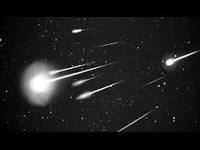Alpha Monocerotids
As promised in my slightly cranky post following the underwhelming Leonid meteor showers this past weekend, we have yet another opportunity to connect with the magic of the cosmos this week.
We can only hope that where each of us lives the cloud cover will part and the Alpha Moncerotids (hereinafter called the AMOs) will be easily seen.
Burst of Activity
The coolest part of the AMO meteor shower is that it occurs in a burst that usually lasts between 30-60 minutes total. This differs significantly from most other meteor showers, which can extend for several hours. Even more exciting to anticipate is that the AMOs are expected to generate approximately 400 meteors per hour during the burst of activity.
As you can read in more detail in the articles I’ve linked here and above (and other articles, should you choose to research the phenomenon further), people on the East Coast of the U.S. should check start checking the sky about half an hour to an hour ahead of when the ‘burst’ is expected to begin.
Acclimate Your Eyes
Obviously, ‘arrival time’ could vary slightly from the prediction, but it’s also smart to allow your eyes to get used to the night sky ahead of time. Thus, if it’s mild enough outside, or if you have some good blankets to wrap up in, you might want to get yourself to your favorite viewing spot at around 11:20 p.m.
The actual ‘burst’ is supposed to begin at approximately 11:50 p.m. Making it worth your while to hang around and maybe find a dark (i.e. non light polluted) place where you can point your nose toward the eastern horizon is the fact that so many are supposed to be visible in such a compact period of time.
Hopefully we’ll see something!
(T-737)
